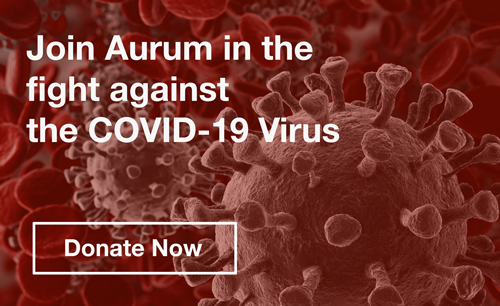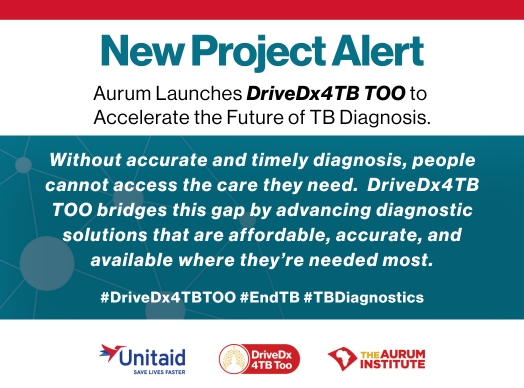The 2022 World Aids Day theme Equalize, urges the global community to address the inequalities which perpetuate the HIV pandemic and hold back progress in ending AIDS. It specifically prompts action for practical steps to be taken to increase access and quality of HIV treatment, testing and prevention, particularly for key populations. The UNIAIDS World Aids Day report states that; “failure to make progress on key populations undermines the entire AIDS response and slows progress.”
People who are incarcerated are a key population, and therefore at higher risk of acquiring HIV but are least likely to be prioritised in many national HIV responses.
Dr Tonderai Mabuto, Senior Scientist at Aurum’s Implementation Research Division, has been conducting research among people released from correctional facilities, who are living with HIV and on treatment for almost a decade.
He speaks about his work in collaboration with government stakeholders, on interventions to link people to care so they have access to, and are assisted to adhere to treatment, once released.
Q: HIV prevention, care and treatment in correctional facilities- what is the problem in South Africa?
A: Globally, South Africa is ranked among the countries with the highest population of criminal justice-involved people. While the burden of HIV is disproportionately higher among inmates in correctional facilities, compared with the general population in South Africa, the access to antiretroviral therapy (ART) within correctional facilities has significantly improved over the years. While incarcerated, most people living with HIV who are aware of their HIV status are initiated on ART, and most (>90%) suppress the virus to very low levels. However, these impressive HIV treatment outcomes observed in the correctional setting may drop dramatically during community reentry. In our prior work we found that only about a third of people living with HIV had documented clinic visits within three months of release from the correctional facility. Critically, these delays in continuing with treatment after release, impede the goals set out in our National Strategic Plan (NSP) to reduce Aids-related illnesses and deaths, and reduce the number of new infections.
Q: What have you been doing to close these gaps?
A: The third goal in South Africa’s current NSP calls for reaching key populations with customised and targeted interventions. This is a principle that we have built our work over the past six years in collaboration with government stakeholders – Department of Correctional Services (DCS) and the Department of Health (DoH), civil society partners, academic institutions, local and international funders, and people returning from incarceration.
The goal of our work is to ensure that the social and environmental conditions that people returning from incarceration find themselves in, do not result in disparities in HIV treatment continuity, and loss of the individual and public health benefits of staying on ART.
Q: What are the key findings from the studies you have done?
A: From 2014 to 2017, we walked the post-release journey with 351 adults who were released from correctional facilities in Gauteng region. This was a pivotal study that illuminated the magnitude of some of the losses from HIV treatment that happen after release from correctional facilities in South Africa. We also identified the complex set of barriers that make treatment continuation difficult for this population. These include the lack of social support during the community reintegration phase, substance use disorders that negatively affect healthcare seeking behaviours, multiple intersecting forms of stigma and discrimination arising from incarceration history and HIV-positive status, economic marginalisation, and perceptions of logistically burdensome healthcare systems.
From 2018 to 2021, we worked with another group of 175 adults who were released from correctional facilities in Gauteng region to test an approach that modelled community adherence clubs that were being implemented in the general communities in South Africa. We called these Transitional Community Adherence Clubs (TCACs). The clubs were adapted slightly by making them exclusively for people on ART returning from incarceration, increasing the frequency of meetings, and using a curriculum that would address the complex set of challenges faced by the population. We also planned to work with local clinics to issue ART through the TCACs to help participants settle down in the first six months of release. The results of this intervention are promising. There is strong evidence that this approach improved HIV treatment continuity compared to current procedures of simple referrals without additional support. We are hopeful that over the next five years we will receive additional funding to generate stronger evidence on the benefit and costs of this approach, by doing a larger study.
Q: What are the major issues arising and how to do you plan in addressing them?
A: From the work we had done from 2014 to 2020, the issue of opioid use disorders (OUD) kept on emerging as a dominant barrier to HIV treatment continuity after release. OUD leads to pre-mature mortality through disengagement from HIV care, social disorganisation, and overdose deaths. Among the populations we had worked with over the years, more than half had reported illicit opioid use. In light of this, since 2021, we have been collaborating with DCS and community-based organisations that provide services for harm reduction and medication-assisted treatment for OUD, with the goal of developing a model of community-based medication-assisted treatment in South Africa to improve retention in HIV care for community re-entrants with the dual diagnoses of HIV and OUD.














